Carbon dioxide (CO2) is key to plant growth in controlled indoor environments, maintaining sustainable operations, and improving crop yield.
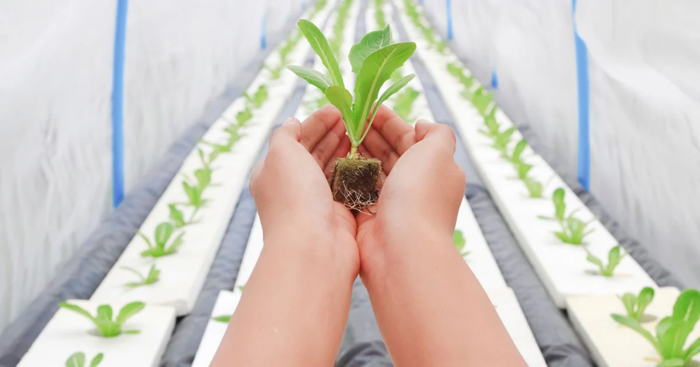
Image Credit: CO2Meter, Inc.
Carbon dioxide enrichment continues to be one of the most effective means of accelerating photosynthesis, but growers also leverage CO2 to increase biomass, shorten growth cycles, and boost overall plant productivity.
Beyond its role in yield enhancement, carbon dioxide can be employed as a natural pest control method, enabling growers to reduce or even eliminate chemical pesticide requirements.
CO2 can act as an organic fumigant when used at certain concentrations, suppressing pests without risks to crop quality. This approach is a particularly popular option with certified organic growers.
Growers committed to clean-label and organic production typically regard CO2 as a safe, inert, and effective input that can be used while maintaining alignment with sustainable and non-toxic farming practices.
Five Indoor Farming Applications That Depend on CO2
Vertical Farming
Vertical farming has quickly become a scalable, efficient approach to indoor agriculture. Stacking crops in vertically tiered systems allows growers to maximize space while maintaining precise control of temperature, humidity, light, and CO2 levels.
Enriching the air with CO2 concentrations between 800 and 1500 ppm can significantly accelerate plant photosynthesis. This results in more rapid growth, improved plant health, and larger yields.
Elevated CO2 levels are closely maintained to create an ideal growing environment. This method is regularly used with high-value crops such as herbs, leafy greens, and microgreens.
Many vertical farmers rely on tools like the RAD-0502 CO2 Grow Controller to precisely monitor and adjust CO2 levels. This device helps ensure optimal CO2 concentrations are maintained during photosynthetic hours by enabling automated enrichment based on light cycles.
Integrating CO2 control into their overall growth strategy allows vertical farms to improve output while simultaneously making their operations more competitive and sustainable.
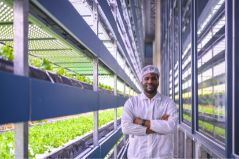
Image Credit: CO2Meter, Inc.
Mushroom Farming
While leafy crops thrive on CO2 enrichment, too much carbon dioxide can hinder mushroom development. Mushroom farming, therefore, requires a more careful balance.
Mushrooms naturally produce CO2 during their growth cycle, meaning levels can accumulate rapidly if adequate ventilation is not in place. There is a risk that elevated CO2 concentrations hinder mushroom growth and reduce yields, meaning that CO2 monitoring is key to maintaining optimal fruiting conditions.
Many mushroom growers rely on tools like the CM-501 Handheld CO2 Detector to monitor and manage excess CO2. This instrument enables the rapid, accurate spot-checking of CO2 levels, humidity, and temperature throughout the growing environment.
Facilities requiring continuous monitoring and worker protection typically opt to install the RAD-0102-6 Remote CO2 Storage Safety Alarm. This system provides real-time alerts should CO2 levels reach unsafe thresholds.
Using these devices helps safeguard the mushroom crop and the facility team, ensuring that optimal growing conditions are maintained while protecting employees from the risks associated with confined space CO2 exposure.
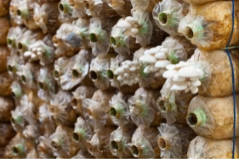
Image Credit: CO2Meter, Inc.
Produce and Grain Farms
Carbon dioxide plays a dual role: it supports plant health in indoor produce and grain farms and acts as a natural pest control solution.
CO2 fumigation remains a commonly accepted practice for the management of insects without employing synthetic chemicals. Exposing pests to elevated CO2 concentrations (generally around 5% for several days) can eliminate these without harming the crop.
CO2 fumigation also represents a compliant, non-toxic alternative to traditional pesticides, allowing organic farmers to maintain alignment with organic farming standards.
Crops such as okra, corn, leafy greens, and Brussels sprouts also benefit from this pest management strategy. It helps maintain the integrity of the produce while simultaneously avoiding chemical residues.
The CM-501 Handheld CO2 Detector sees routine use in produce and grain farms, ensuring that fumigation levels are accurate and repeatable while confirming that CO2 exposure remains within safe and effective thresholds.
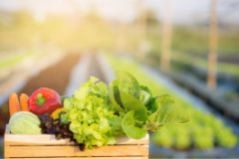
Image Credit: CO2Meter, Inc.
Livestock and Poultry Facilities
Carbon dioxide plays several highly specialized roles in livestock and poultry operations, particularly in humane animal handling and hatcheries. Maintaining precise CO2 levels during egg incubation is essential to optimizing hatch rates and encouraging chick development.
Controlled CO2 concentrations also impact the timing and uniformity of hatching, allowing producers improved control over production cycles. CO2 can also be used as a method of euthanasia in some operations, where concentrations of 40% or higher rapidly render animals unconscious with minimal distress, aligning with welfare guidelines.
Many poultry producers trust the CM-1000 GasLab Pro Multi-Gas Sampling Data Logger when monitoring these sensitive CO2 applications.
This powerful tool provides accurate, real-time CO2 sampling across various points in the facility, ensuring that CO2 levels and environmental conditions remain within optimal ranges.
Operators can use the CM-1000 to fine-tune both gas delivery systems for humane practices and incubation processes, ensuring compliance and efficiency.
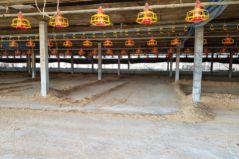
Image Credit: CO2Meter, Inc.
Indoor Cultivation Facilities
Indoor cultivation facilities depend heavily on controlled CO2 environments to accelerate plant growth and maximize yields. This is particularly the case with facilities growing high-value crops like cannabis.
Enriching grow rooms with CO2 levels between 800 and 1500 ppm can considerably improve photosynthesis, leading to denser buds, faster plant growth, and an overall production increase.
CO2 is a potentially hazardous gas when used in confined spaces; however, many municipalities and fire codes have been prompted to mandate the installation of CO2 safety monitoring systems wherever enrichment occurs.
Many cultivators rely on the RAD-0102-6 Remote CO2 Storage Safety 3 Alarm to ensure growth optimization and regulatory compliance.
This device facilitates the continuous monitoring of ambient CO2 levels, ensuring safety and optimization. Should concentrations exceed safe thresholds, alarms trigger, and gas supply can be automatically shut off or ventilation systems can be activated.
This ensures plant health and personnel protection, with the RAD-0102-6 offering a seamless solution for growers looking to enhance productivity without compromising on code adherence or worker safety.
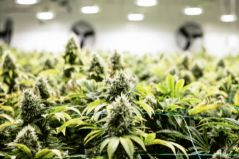
Image Credit: CO2Meter, Inc.
CO2 Safety and Monitoring: Protecting People and Produce
While carbon dioxide is central to indoor farming, excessive concentrations of CO2 can pose serious health risks to workers, as well as potentially damaging crops if levels are not appropriately managed.
CO2 is invisible and odorless, making it virtually impossible to detect without appropriate monitoring equipment. The risk of carbon dioxide buildup is high in enclosed grow environments, particularly those employing enrichment systems or using CO2 for fumigation.
Prolonged exposure to elevated CO2 levels can lead to fatigue, dizziness, or even unconsciousness in workers. Any safe, compliant operation should utilize continuous gas monitoring and alarm systems to ensure staff safety and maintain regulatory compliance.
CO2Meter offers a comprehensive portfolio of fixed and portable CO2 safety solutions specifically designed for use in agricultural environments.
Available systems range from the CM-501 Handheld Detector (designed for quick spot checks) to the RAD-0102-6 Remote CO2 Storage Safety Alarm (able to provide real-time, audible alerts in high-risk areas), giving growers access to the quality tools required to ensure the protection of produce and people.
These systems support indoor farms’ adherence to local fire codes and OSHA regulations while offering farmers peace of mind that their operations and team are protected from invisible hazards.
Optimize Growth with CO2 and Safety Monitoring
Carbon dioxide emissions vary between indoor farming environments, but they are clearly vital throughout the sector.
Sector-specific knowledge of each indoor farming industry and its respective applications of CO2 is key to selecting the ideal solution for a given indoor farming environment and its overall requirements.
Acknowledgments
Produced from materials originally authored by CO2Meter.

This information has been sourced, reviewed and adapted from materials provided by CO2Meter, Inc.
For more information on this source, please visit CO2Meter, Inc.